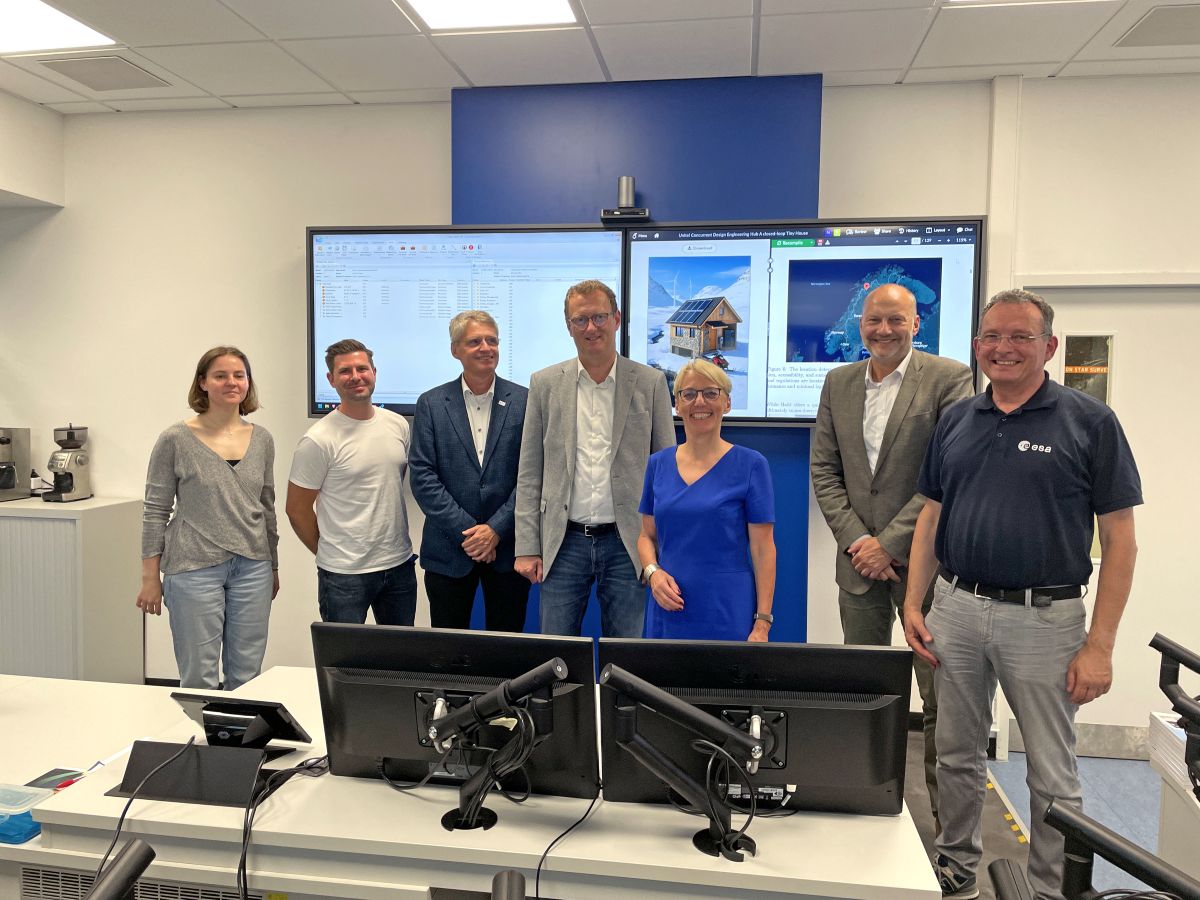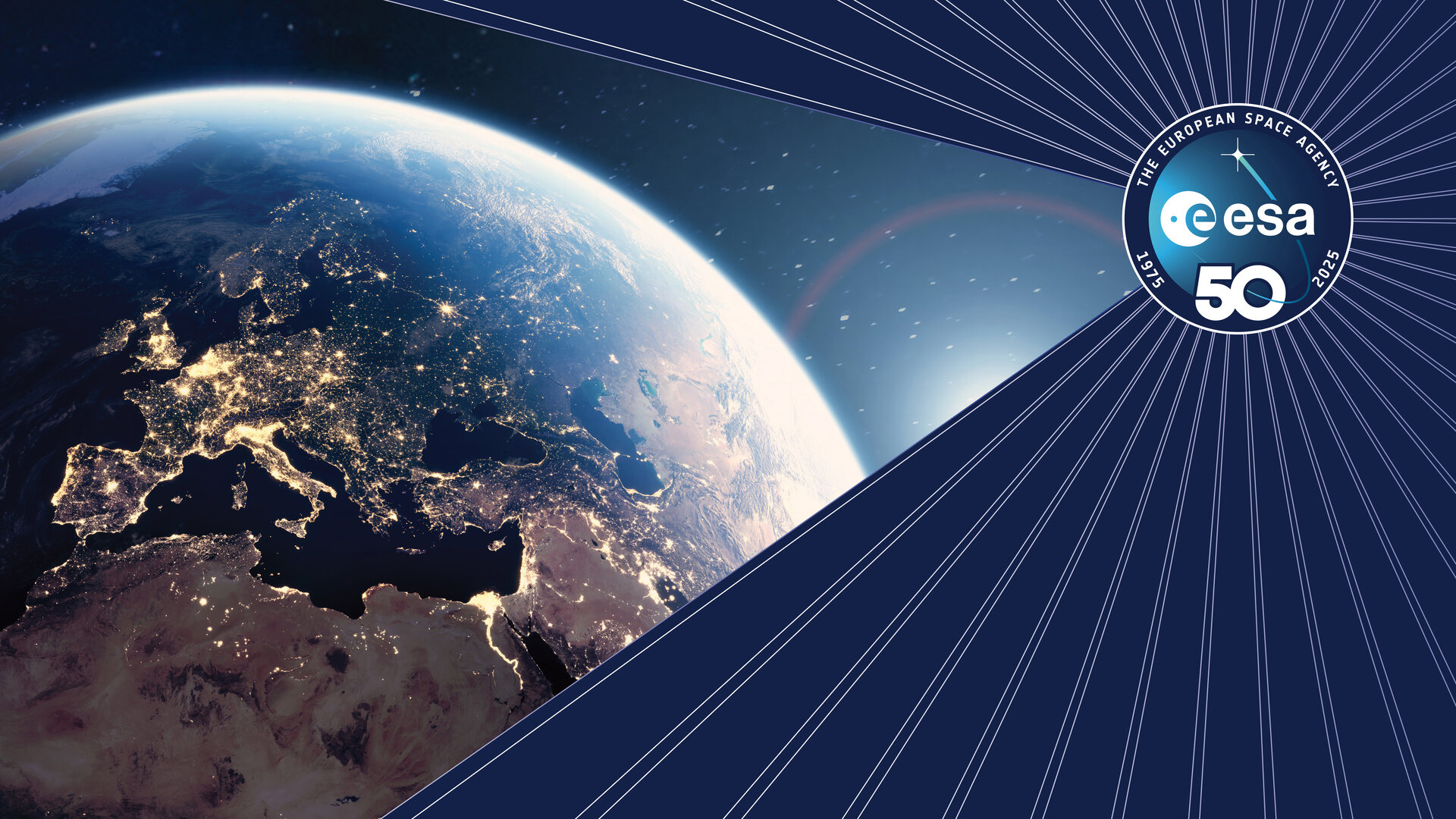Extending the Internet into space
Any space mission, whether in deep space or an Earth orbit, needs to master communicating across a vast distance. This includes preparing how and when the spacecraft will be sending data back to Earth, configuring data transactions, optimising how quickly it can transfer data, and figuring out what the best and available time windows of suitable ground stations are.
If only it were as easy as connecting to the internet. Or could it be?
On 15 August 2023, with the support from our partners at NASA Jet Propulsion Laboratory (JPL), Morehead State University and D3TN, ESA demonstrated that its ground segment is ready to support mission communications using disruption tolerant networking (DTN) based on the Bundle protocol, enabling internet-like networking in space to finally create the Solar System Internet. Using actual operational networks, it confirmed the interoperability of DTN between space agencies and industry partners.
“We have made an important innovative step towards a true Solar System Internet by proving our ESA ground infrastructure can handle Disruption Tolerant Networking. This opens up possibilities for lunar communication relays with reliable and flexible communication both in space and with Earth,” says Klaus-Juergen Schulz, Head of Ground Station Engineering at ESA.
“I want to thank our partners in this demonstration, NASA JPL, Morehead State University and D3TN, for the wonderful collaboration and great outcome.”
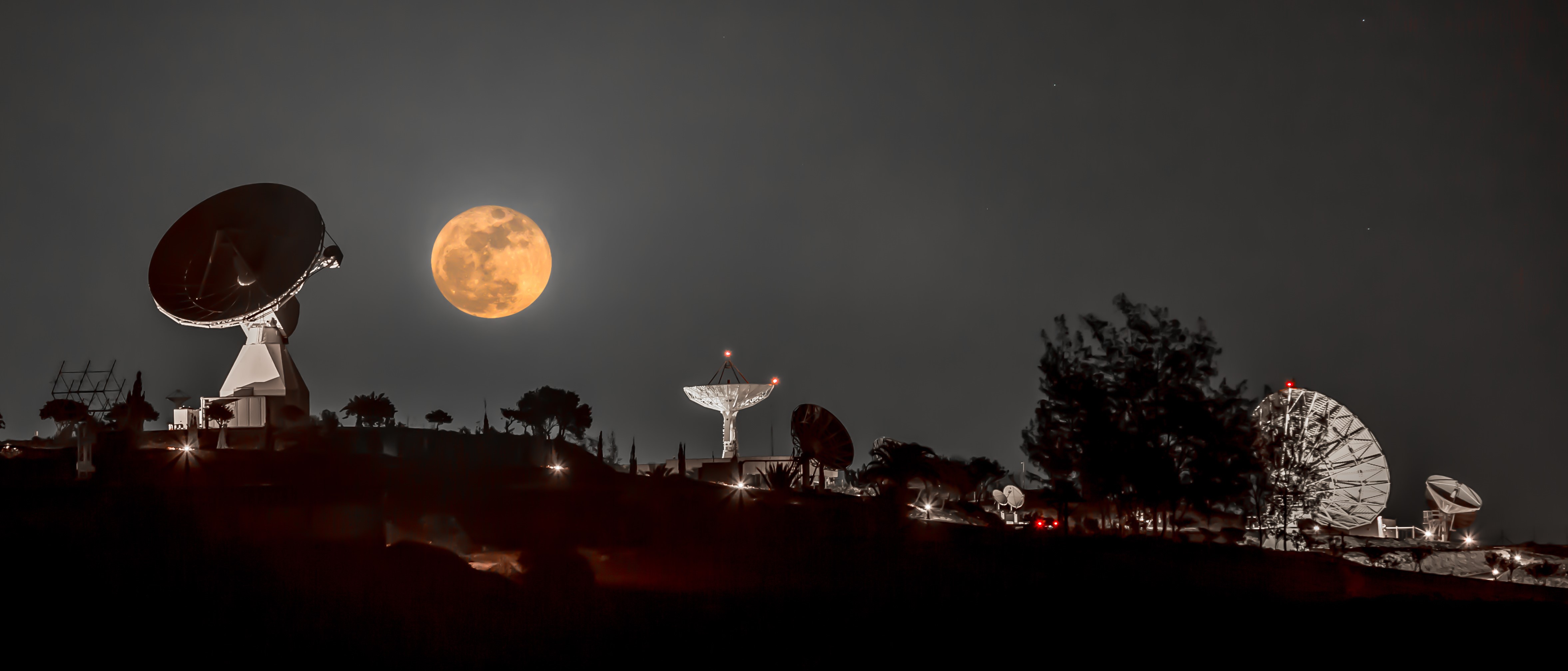
Winter Moon, composite image by Claus Vogl
The demand for a Solar System Internet
Currently, communication and data transfers between Earth and spacecraft still happen ‘old style’ with pre-planned point-to-point connections. A link is established between a control centre, a particular antenna and a spacecraft, the data gets sent back and forth and then the link is actively disconnected, much like an old 90s dial-up modem that used to keep your phone line busy when connected to the internet.
“Two factors drive the need for a different, more flexible approach to space communications,” says Felix Flentge, ESA Software Engineer. “On the one hand the increased number of missions, especially targeting the Moon and lunar orbits, and on the other the increasingly high data downlink rates of Earth-orbiting spacecraft.”
To have a sustainable presence on the Moon requires reliable and autonomous lunar communications and navigation services. This is why ESA is working with its industrial partners on the Moonlight initiative, to become the first off-planet commercial telecoms and satellite navigation provider. Lunar communication relays will need shared networking standards the same way that our internet infrastructure on Earth does.
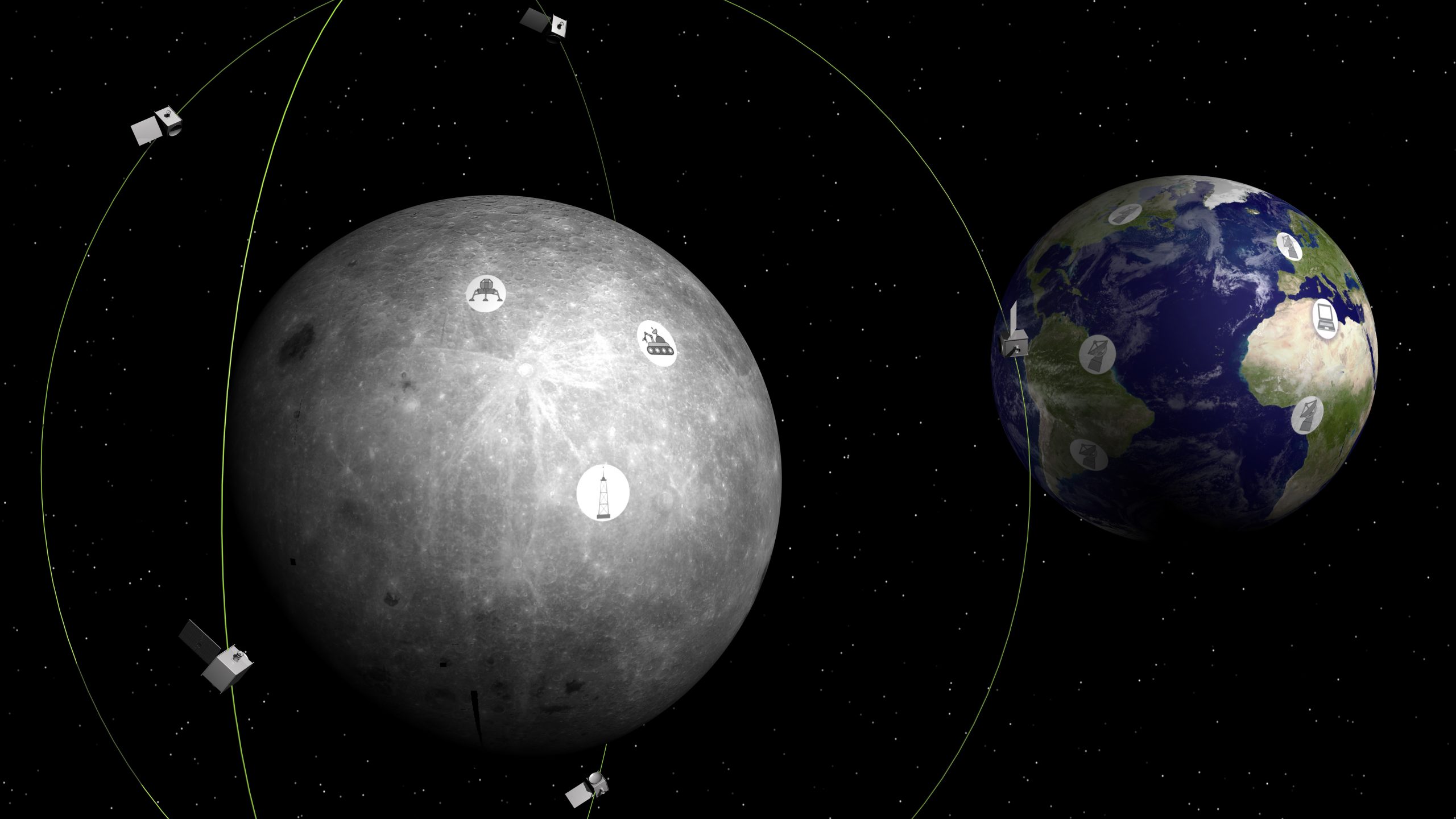
ESA's Moonlight Initiative: Lunar Communications and Navigation Services
Built-in tolerance for disruption
On Earth, we have come to expect internet connectivity on our mobile devices everywhere, except in the remotest of places. Space is remote though, and distances are vast. The Internet protocols we have to orchestrate the Internet on Earth can’t handle the delays and disruptions that come with space communication.
The solution lies in a new way of networking that is tolerant of disruption and related requirements such as delays, highly asymmetric data rates and large latencies, but that can still make communication hyper-accessible and efficient. It was the IP protocol that took the key step to divide data into small, separate packages, automating and abstracting away the need to know how each of them gets from a to b as they follow any available route in the network to their destination.
The ‘Bundle protocol’ will now effectively do the same in space. This new protocol allows communication between nodes in the Solar System Internet similarly how the Internet Protocol allows communication in the terrestrial Internet, but uniquely suited to the challenges that come with space communications.
“Essentially, Disruption Tolerant Networking based on the Bundle Protocol enables two entities to communicate over a network even if there is never an uninterrupted connection between both of them,” explains Felix Flentge. “It does so by applying store-and-forward mechanisms where data is travelling from one hub to the next whenever a connection becomes available.”
DTN not only solves the problems caused by disruptions in point-to-point communication links due to limited contact periods or distortions in the communication channel. It also automates data consolidation and distribution during the communication process.
Proving DTN works
It was now demonstrated in collaboration with NASA JPL, Morehead State University and D3TN that ESA’s ground infrastructure is ready in principle to support missions leveraging DTN and the Bundle Protocol.
The goal of the DTN demonstration on 15 August was to confirm its interoperability between ESA’s Estrack ground stations and external space agencies and industry partners using actual operational networks.
Originally, the demonstration would have included communicating with the Lunar IceCube spacecraft, launched as a secondary payload of NASA’s Artemis-1 mission. Unfortunately, no communication could be established after launch so instead, the DTN demonstration made use of pre-recorded spacecraft data replayed with a generic spacecraft simulator at Estrack’s Kourou ground station.
The network containing six nodes was fairly complex, sending data from a satellite to a ground station, then to ESA’s and NASA’s space operations centres and then onwards to its final destination at D3TN.
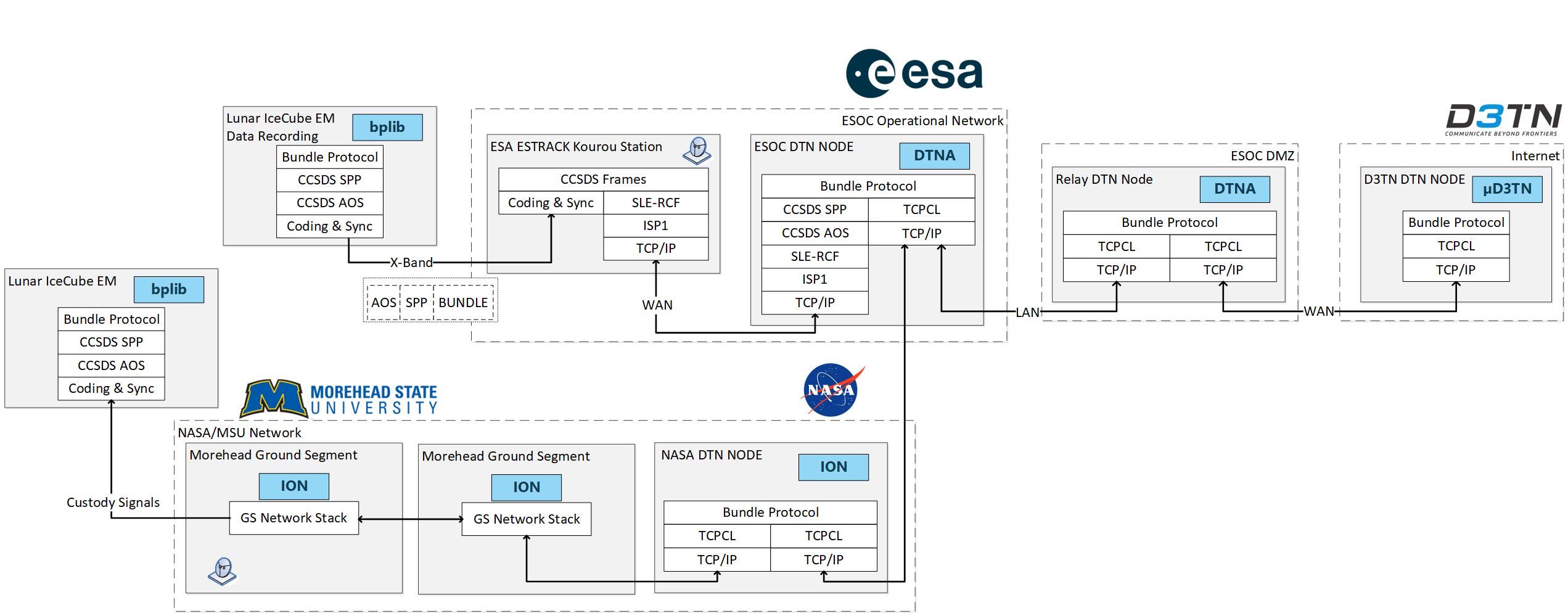
The network diagram of the DTN demonstration
The DTN demonstration proves that the standards of the Bundle protocol are detailed enough for independent parties to develop their own networking technologies and still being able to communicate – just like the internet.
The next step for the project is to further extend the network with additional partners and work towards in-orbit demonstration activities. Additional DTN experiments using ESA's ‘flying laboratory’ OPS-SAT are also currently being prepared.
Making the Solar System Internet a reality
In the design phase of every mission into space the data operations setup is a key factor in determining the potential scientific return, fueling the need to keep pushing for further innovation. An example would be the ground segment preparation for ESA’s Euclid mission, revolving primarily around the data operations challenge to handle a very high quantity of data in large files.
Over the next decade, the Bundle Protocol will be considered for Earth Observation missions as it can address the challenges related to their very high data downlink rates. Communication services based on the Bundle Protocol are also expected to be provided by the lunar communication infrastructures under development like ESA's Moonlight initiative.
It takes time to implement such a fundamental paradigm shift in space communications, from point-to-point communication to internet-like networking in space. As the demand for such flexible communication in space is growing fast, it will not take long for the Bundle Protocol and DTN to make its way into the communication requirements for new missions in the design phase – making the Solar System Internet a reality.


